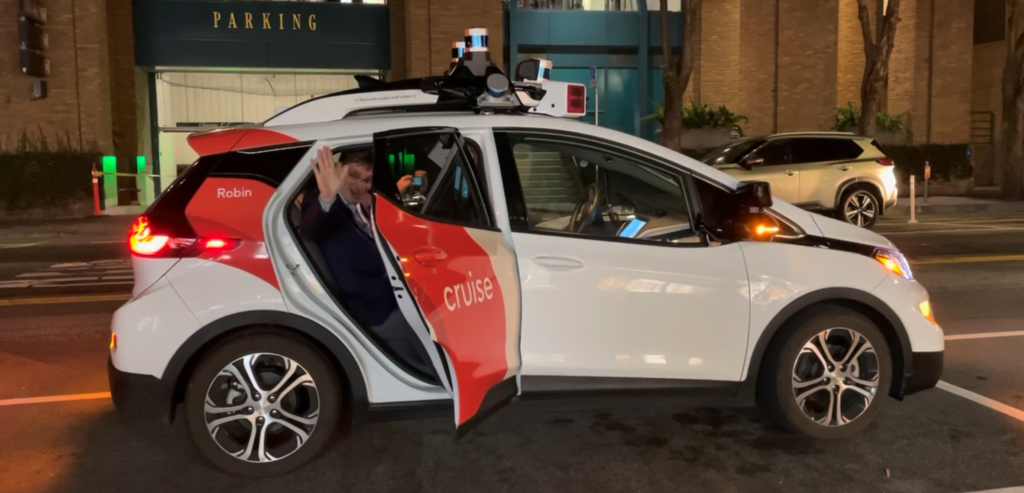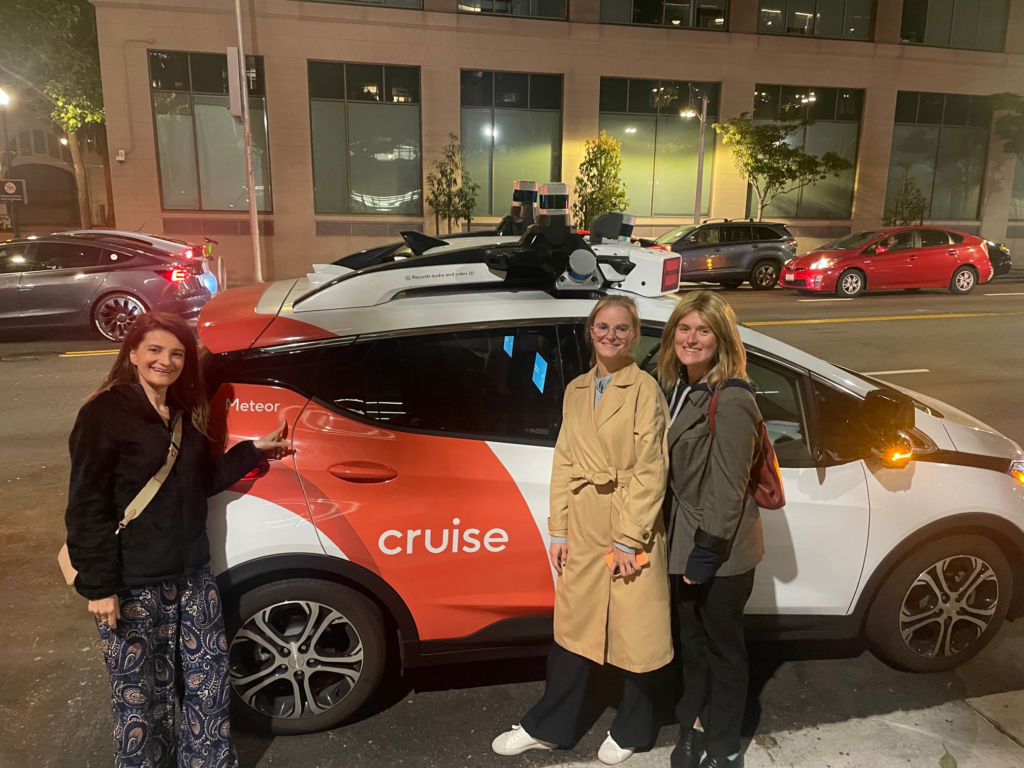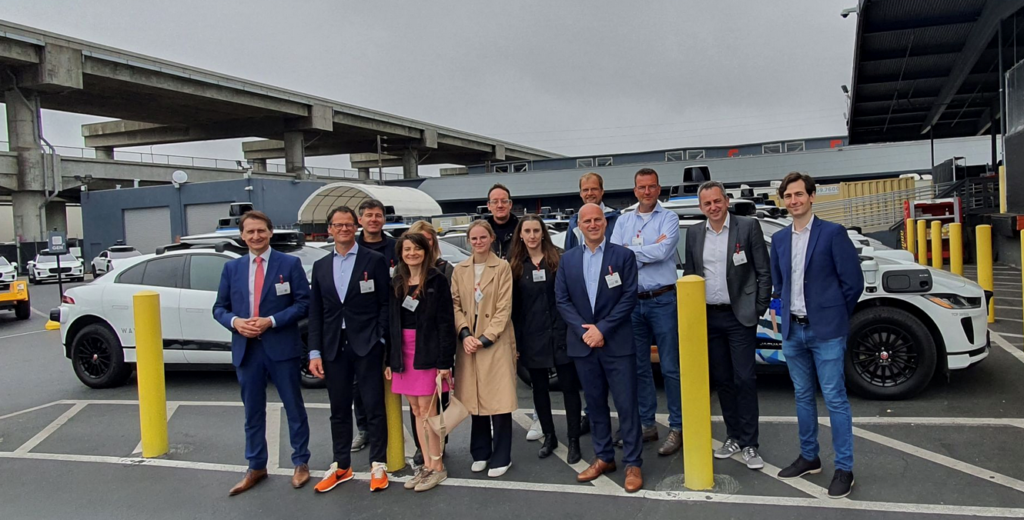Last modified on February 12, 2024
Seeing is believing: Riding with Cruise and Waymo in San Francisco
This summer, many European CCAM experts, including some FAME representatives, attended two events in San Francisco; the annual Automated Road Transportation Symposium (ARTS)1 and the International Task Force on Vehicle Highway Automation (ITFVHA)2. This proved to be a great opportunity to catch rides with Cruise and Waymo, which now both have commercial deployments of level 4 vehicles in the city of San Francisco. More than 20 European experts from 9 different member states have taken an average of 4.3 rides per person and we asked them about their experiences. For 80% of the respondents, this was the first ever experience in a commercially deployed self-driving vehicle, not counting the many test rides most of them had with prototypes and safety drivers under controlled conditions. It turns out that the first time an empty vehicle roles up to you in mixed traffic on public roads and drives off with you in the back seat, resonates quite differently. An overwhelming majority of 90% indicated that this experience had changed their perspective on the work they are doing.
“I saw with my own eyes what I have been regulating for years, helps me in my work.”



Positive and negative experiences
The most cited positive experiences were related to the driving style of the vehicles, it came as a surprise that they were quite smooth and assertive. It also didn’t take long for most to get used to the fact that there was no one behind the steering wheel and that the rides felt safe. The interactions with other traffic, including detecting and stopping for pedestrians, were better than expected. A self-driving vehicle is patient, doesn’t have emotions and sticks to the traffic rules, which is predominantly a positive aspect but also seen as a negative sometimes. This is when other traffic participants think the robot taxis are holding up traffic by driving too slow (sticking to the speed limit) or are coming to a complete stop at every stop sign (instead of a “rolling” stop), but it seems unfair to hold this against self-driving vehicles. More serious negative experiences are related to pick-up and drop-off zones (ranging from inconvenient, illogical to illegal), erratic driving behavior (almost hitting parked cars), interactions with emergency vehicles and “bricking” (stopping for no apparent reason and holding up traffic). Some of the respondents experienced strange or illogical route choices resulting in longer rides, for instance, it seems that the vehicle would rather make three right turns than one unprotected left turn.
“I was amazed at how safe the ride is and how quickly you get used to not having a driver behind the wheel.”
“I was absolutely mind-blown, I had forgotten about the absence of a driver within minutes.”
Public acceptance
As with many innovations is the case, there’s both curiosity and opposition in the streets. In one situation the vehicle was being “played with” by a group of teenagers who stepped in front of the car to stop it. In two other situations, the vehicle was being mobbed by either water or objects being thrown at it or even mobbed by being surrounded and several cardboard boxes were put on the hood to prevent the vehicle from driving. In the latter case, a dispatch team had to come over to rescue the passengers. In the media, you can regularly hear about various incidents and read about public resistance.
“The SF visit has shown that on-road testing and learning is valuable but controversial.”
Are we there yet? What can we learn?
Although it’s easy to ask the question, it’s more difficult to answer, as it deserves a nuanced approach. And 86 rides by 20 experts are perhaps too anecdotal and biased to do so in a scientific manner, but here’s an attempt. The enabling technology seems to be ready, but there is still quite some driving behavior that is sub-optimal. This can be improved by getting more experience in the field. Just as a novice driver, you cannot become an experienced driver by staying in the parking lot and practising your vehicle control skills, you must get out in traffic and learn from your mistakes. That’s why real-life experience is so important.
In Europe we can certainly learn from these experiences, we have identified certain topics that can be addressed in either upcoming Horizon Europe calls or ongoing activities and FAME can be a facilitator in exchanging knowledge and experience. Expanding the ODD or solving its defragmentation (as Hi-Drive calls it) with infrastructural support or traffic management is one of those topics. Other topics include, but are not limited to, (societal) business model definition, public education, the definition of the desired driver behavior, dealing with edge cases and safety assurance approaches.
Note
At the time this article was submitted the DMV had suspended Cruise’s operational permit in the aftermath of an edge case accident with a pedestrian, which was caused by a manually driven vehicle and where a Cruise vehicle was also involved. Waymo is still allowed to operate. The full specifics are not yet known, we will monitor this situation carefully to see how it develops and what we can learn from it.
1 – https://trb.secure-platform.com/a/page/automatedroadtransportationsymposium

The article was written by Tom Alkim, Strategic Advisor Connected & Automated Mobility at MAPtm


